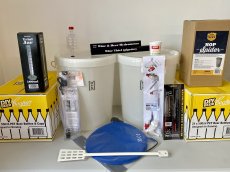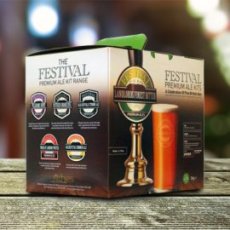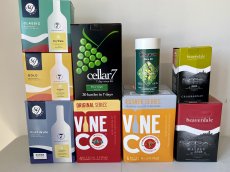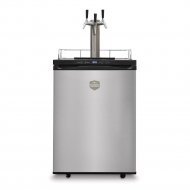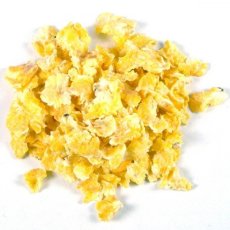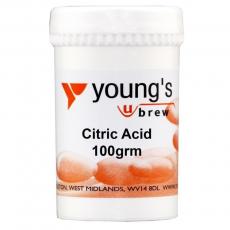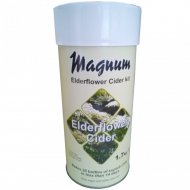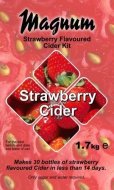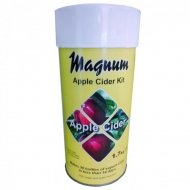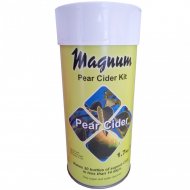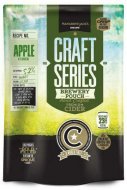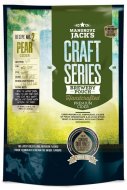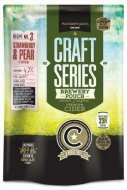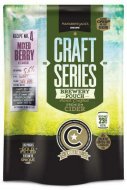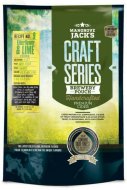Sign up to the Brew Mart newsletter for the latest news, offers & more
Happy Easter from Brew Mart!
Brew Mart will be closed on Good Friday & Easter Monday. Open Saturday 19th as usual.
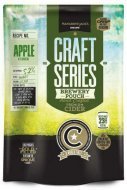
Home Cider Making Kits
Shop for the best refreshing home brew cider making kits for you to enjoy brewing and drinking
Each DIY cider making kit will contain all the ingredients and instructions for you to make up to 40 pints of refreshing cider made from either apples, pears, strawberries, elderflower, fruit of the forrest and summer fruits.
Mangrove Jacks Craft Series Strawberry & Pear Cider Homebrew Kit - 40 pints/23 litres
Mangrove Jacks Craft Series Elderflower & Lime Cider Homebrew Kit- 40pint/23L
Brew Mart stock all the best cider making kits such as
Bulldog home brew cider kits
Mangrove Jacks home brew cider kits
Muntons homebrew cider kits
Click here for all the information on how to brew cider at home
Home Brew Cider Kit & Cider Making kit
The stages of fermentation
- Always use clean and sterilised equipment. Please click here to read The importance of sterilisation.
- Using the correct size fermenter for the size of kit you are using, empty the contents of the cider kit plus sugars, stir and then add water
- Take a hydrometer reading. Click here to see how to use a hydrometer.
- Test the temperate is correct for adding the yeast
- Pitch your yeast
- Fit the lid with hole and grommet
- Attach airlock
The process of fermentation
Before you start, read your kit's instructions carefully, as each type of homebrew cider kit can differ slightly. If it helps, remove the instructions from the tin or pouch and keep them to hand.
Empty the tin or pouch contents into the fermenter bucket; if the tin contents seem a little sticky, stand in warm water for a little while. Squeeze the contents of a pouched cider kit as you would squeeze a tube of toothpaste.
To remove all the contents from the cider kit, rinse out at least twice with hot water, ensuring that you have not left any of the concentrates behind.
How to brew cider from a homebrew kit.
If brewing sugar is needed, now is the time to add it and then top up with the required water.
Using a long-handled spoon or paddle, give the mixture a really good stir. The best implements to use should be made of either food-grade plastic or stainless steel. Wooden implements are not a good idea as bacteria could be present if the wood is scratched at all, and this could harm your brew.
Keep stirring until you feel sure that all the sugar and concentrate is dissolved.
Once this is done, take a hydrometer reading and keep a note of it.
Next is the temperature reading to see if it is safe to add the yeast. The best temperate is between 17 C to 22 C. If the liquid needs to cool, put the fermenter lid on to keep any bacteria out while you are waiting.
Once the liquid is at the correct temperature, pitch the yeast. (Add the yeast).
Replace the lid with the hole and grommet and airlock.
Fill the airlock roughly half full with water, and this will stop air going in, which could harm the brew but allows CO2 to escape in the form of bubbles.
For an ideal smooth fermentation, it is good practice not to move the fermentation vessel to allow any sediment to collect at the bottom and the temperature not to fluctuate too much. A temperature of 15C is a suitable working temperature to keep the yeast active. Too hot and it will kill the yeast and too cold and the yeast will go dormant.
Cider ferments on average between three to seven days. An indication that the cider has finished fermenting is that the airlock stops bubbling. During fermentation, an amount of foam will appear on top of the liquid, which will subside as the fermentation proceeds.
Keep an eye on the airlock, and if it has ceased bubbling for at least two days, now is the time to take a second hydrometer reading and keep a note of it. The final gravity reading for a finished cider is about 998. If there is any uncertainty that the cider has not finished fermenting, put the lid back on, wait for a day or two and take another reading. If the reading is the same, the cider has finished fermenting, and your brew is ready.
A complete summary of cider brewing equipment
To help you decide how you wish to store your brew, please read
should you use bottles or barrels?
Click here to read how to bottle your brew
If you have any more questions, you can contact Brew Mart by email or telephone or better still visit our shop.
You may also like

